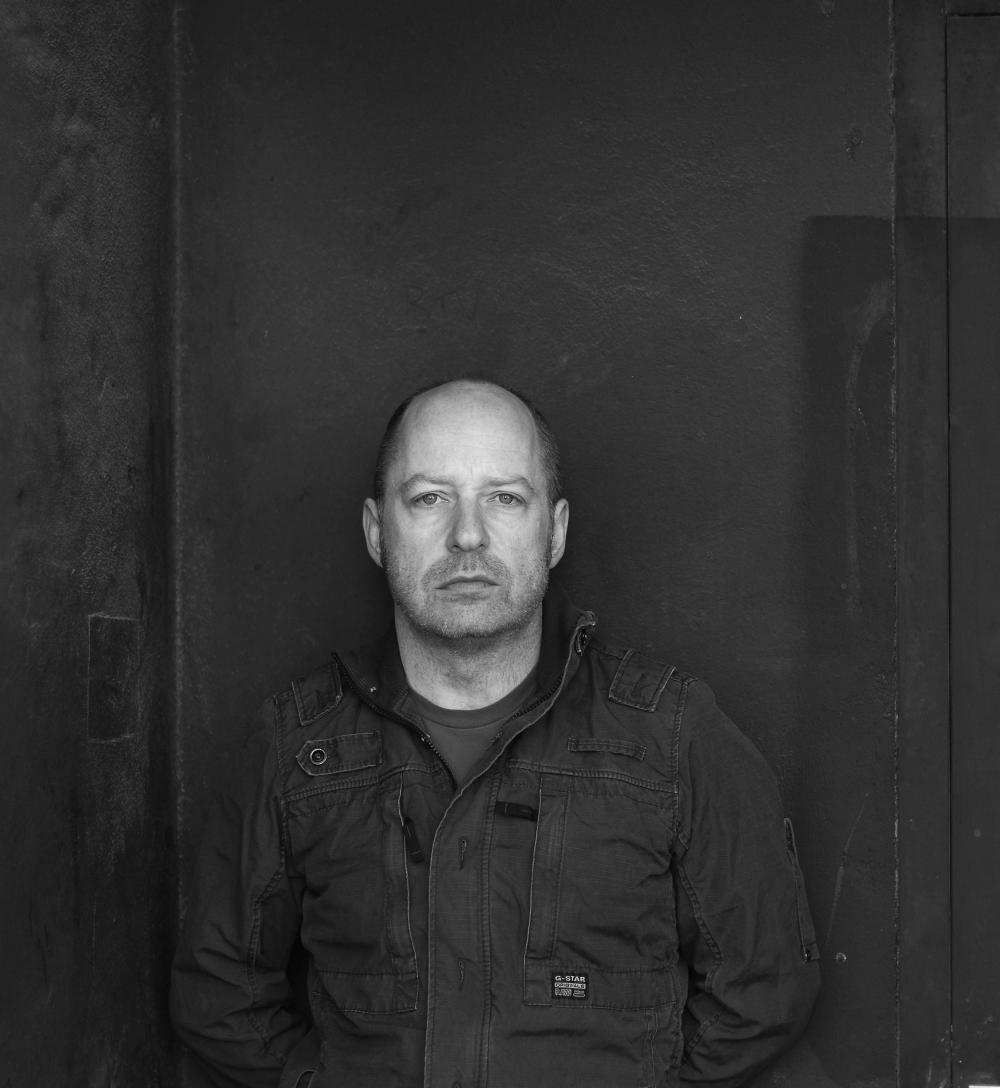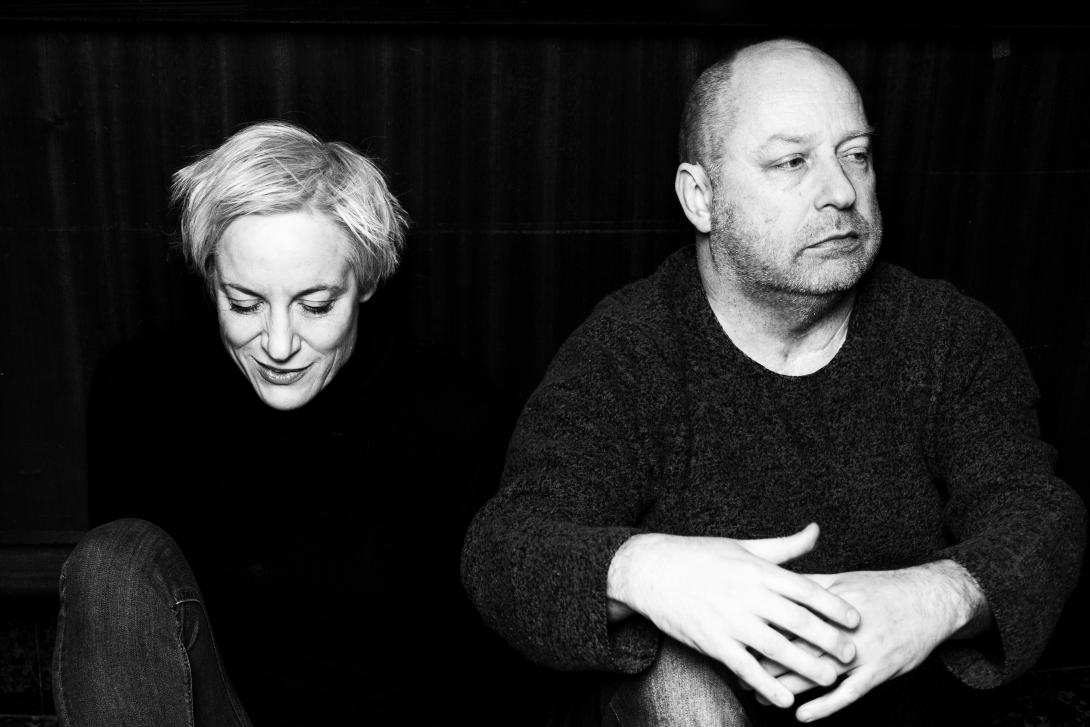‘For me, collaboration is being out of familiar territory’
an interview with Tim Etchells
They’ve known each other for decades and worked together several times before. Shown and Told is their latest collaboration and consists of ‘a structured improvisation’. I spoke with Tim Etchells on an early November morning about improvisation, collaboration and above all, Meg Stuart. ‘My connection to Meg’s work was always around shape shifting and moving.’
You have worked with Meg Stuart in the past. How come you’re both working together again?
Meg and I have indeed been working together for a pretty long time. I contributed text to a couple of her productions in the beginning of 2000 or so and I still follow her work when I can. There has always been a connection and a set of things that we share as interests and concerns, even though our work is very different. We found each other again almost by chance a couple of summers ago, when we were both involved in Boris Charmatz’s improvisation project Expo Zéro in Berlin. We were part of a larger group working on different things in that project. Meg and I chanced upon a couple of improvisational structures that seemed very interesting and asked for further investigation – so that was a kind of re-connection. We have been developing that material and adding new things into this evening, which will be a sort of structured improvisation. The forms that we’ve been working with and how they really play out in real time is left open.
Where do you get your forms and material for this improvisation from?
For me this project fits with a couple of other things that I have been busy with – the solo Broadcast/Looping Pieces which I made a couple of years ago and an ongoing collaboration with violinist Aisha Orazbayeva, both of which involve me working with language and improvisation. Basically, over the last twenty years I have gathered a collection of language fragments that I haven’t put into a finished text – it’s an ongoing collection of language material, a notebook or a scrapbook that includes texts I’ve written alongside things from the newspaper and bits of overheard conversation as well as things from movies or the internet. Working with that material allows me to speak in different situations and make different connections – it’s a raw material that I can activate in many ways.
For Shown and Told will you be creating the spoken improvisation, whereas Meg does the physical form?
Well, in some ways yes. But on the other hand, the desire to work with this collection of language fragments is also wanting to put them into physicality: to put them into embodiment and into time and space. In that sense, they become related with physicality. They go from being words on the computer screen or on the page to words in a body, in the air. I think, the way I am trying to work with the language is also about how the language sits in my body and how it animates me in space. Even at the level of breathing it becomes very physical, because sometimes I’m trying to speak very fast or trying to describe or respond to what Meg is doing. It has always a kind of movement aspect to it. For me, these two things are not really separate – as ephemeral as the voice is, it is still connected to the body. At the same time, there are also moments within the work where I’m not speaking and Meg is speaking, or we’re both not speaking. It shifts in several directions.
You mentioned there are common concerns between Meg and you. What kind of concerns are you talking about?
The biggest and simplest connection is our common idea of a human being as a kind of meeting point for many different voices, impulses or presences. That might be physically, but also linguistically. For me the connection to Meg’s work was always around shape shifting and moving. The instability of the human subject and its presence. The way people are many things in performance but also in the world. Many forces, narratives and possibilities move through us in any given moment. I think we both comment that in different ways. It always has been there in my work with language especially and I see related ideas very strongly in a lot of Meg’s work on movement. I think the ground we meet in has been that around these ideas.
What are qualities of Meg as a performer that makes it interesting for you to collaborate with her? What do you really appreciate of her?
There is a very sort of deep listening that Meg is doing to what she is and what she is made from. You see that in Meg, when she is moving and when she is constructing a piece. It’s a commitment to understanding the world in a complex and individual sort of way. I contributed to a couple of her larger pieces at the beginning of the years 2000 and what I really liked was the sense of Meg searching for things, searching for the work. The rehearsal room was full of impulses and opinions and inputs from other people – so much so that at times she might have looked snow-blind or overwhelmed. But over time I realized that she was very carefully taking in all of these possibilities, sifting and organizing them and producing an extraordinary sort of balanced compositional work from all of it. That’s something that I admire.
In my own practice with Forced Entertainment and in other contexts, I have another version of that same process I guess, but it’s always very useful to see somebody else working through material in that way. And in particular the way that Meg orchestrates chaos - that’s is really something that I celebrate and learn from. Maybe that’s the fundamental thing when you are working in performance: organizing the material, deciding what’s there and what not. It’s a common creative question I guess, but I’m fascinated by different approaches.
What is for you so powerful about collaboration in general?
The group Forced Entertainment feels like home to me, where I could say ‘in that room I know exactly where I am’. It’s 32 years of figuring out how to be together. Other collaborations are usually about being off balance: being out of ‘familiar territory’ in a conversation or framework that I don’t fully understand. That’s definitely what’s there with Meg: I think I can articulate about 30-40% of what we’re doing but for the rest, there is not really a language. That means we are sort of blundering – the work is ahead of my ability to describe or articulate it. I like that. Just like in any collaborations that I value apart from the company: I like that feeling of creating a space between us, where different kinds of rules can operate.
Has improvisation always been an important part of your work?
In my work, beginning with the company, there wasn’t really improvisation. There was only structures, roles and systems. Then there came more improvisation in the rehearsal room, but the aim was to make something where everything was fixed. Improvisation was a kind of tool in the studio, but it wasn’t something you did in public. Then at a certain point, I think driven by a fascination of what happens in improvisation, there was the desire to create structures that would allow the improvisation in public as well. It’s trying to find ways to bring that work into public, more radically I suppose.
Are there ways of improvisation that you see in Meg’s practice that you take over in your own?
Years ago, Meg saw this monologue piece of mine, which I wrote for the American actor Jim Fletcher, called Sight is the sense that a dying person tends to lose first. It’s a monologue. In an hour, it is trying to describe everything in the world with no particular order. Jim has this very strong, blank, calm delivery and he brings the whole text in this way. He doesn’t really vary much. It is very compelling and also sort of strange because it really keeps you in this place and moves around very little. After the performance, Meg said to me that she wondered what it would be choreographically. And I think, when I am watching Meg’s work, I am often thinking what it means to me in terms of my work with language and performance. What would it be to incorporate this or translate it? What could I learn from this? If I translate this into my doing, what would it be? Of course these are impossible questions to answer, because there is no direct translation. However, it is one of the ways that one gets drawn into another territory: by this thought experiment about taking on something from somebody’s practice. At the same time we do share this interest in the fragment and moving from one state to another. I tend to think about that in linguistic terms or in narrative terms, but I know that connects very deeply to energy and physical proposition in space. So I know that when Meg’s talking about those things, the route or connection to what I’m doing is always quite strong.
There is something about the relation between language and doing, language and physicality, language and image. Language can be a kind of controlling or fixing force in relation to image or to doing, which often seems to be more ambiguous and less defined. Something that I have struggled with in my work since the beginning: being in love with language, but also trying not to let it be this controlling, fixing form. To upset the capacity for closing things down that spoken language has. One of the things that Meg and I are exploring, perhaps, is trying to find ways of working with language and image and language and movement, that allow the language to be open, poetic and on the same level as other kinds of material. I think that this is really important: to allow the language to exist as texture or musicality or energy rather than semantics. A lot of my improvisation in the last few years has been working on this space between language as a conceptual force and language as a musical or poetic force. This improvised work might be another route around that, in collaboration with Meg.
an interview with Tim Etchells by Eva Decaesstecker (Kaaitheater, November 2016)

